Year of the Tiger: Queensland's Tiger Kings
By Tom Jordan, Queensland Memory | 2 February 2022
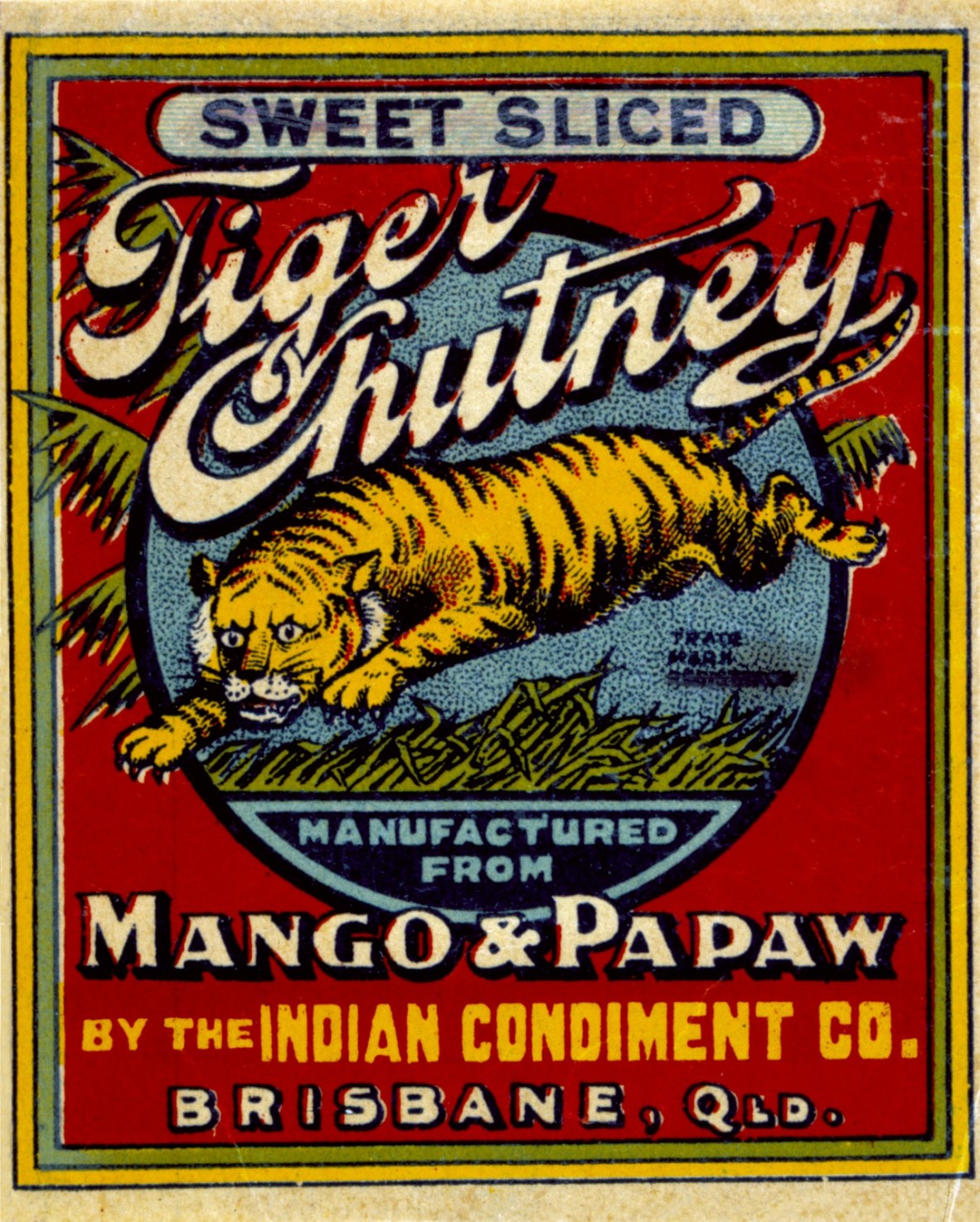
Tiger Chutney label, John Oxley Library, State Library of Queensland.
The 1st of February, 2022, marks the start of the year of the Water Tiger in the Chinese Zodiac. Also known as the Shengxiao (translated to "born resembling"), it's represented by 12 animals in as many years, each with their own positive and negative attributes. Each year also has one of 5 natural elements attached to it: Earth, wood, fire, metal, and water.
While there are many different ideas of what the tiger represents, The attributes it usually symbolises include power, courage, confidence, leadership and strength. It also is believed to be a year of renewal and new changes. If you were born in 1998, '86, '72, '62 or 1950, this may be your year. The last year of the Water Tiger was in 1962.
To commemorate the start of this new Lunar new year, we've compiled some of the best collection items dealing with tigers in Queensland.
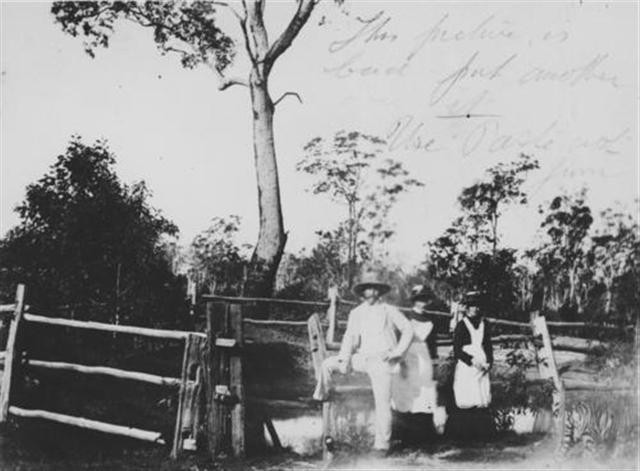
Can you spot the tiger in this picture? Charles Higgins’ tiger menagerie at Toombul, Brisbane, ca. 1888. Image Number 68039.
Higgins' Tiger Menagerie
Look out Joe Exotic! Perhaps the most famous example of tigers in early Queensland were the captive creatures held by Charles Higgins, an eccentric Toombul landowner in the late 1800s. As Toombul locals were surprised to find out, peeking over his property fence to the sight of wild tigers, Higgins had a interest in exotic animals, keeping a cheetah, a panther, several dingoes, monkeys and snakes among other animals. It is a pity reality television wouldn't be invented until much later, as the life and times of Higgins would make for fascinating viewing.
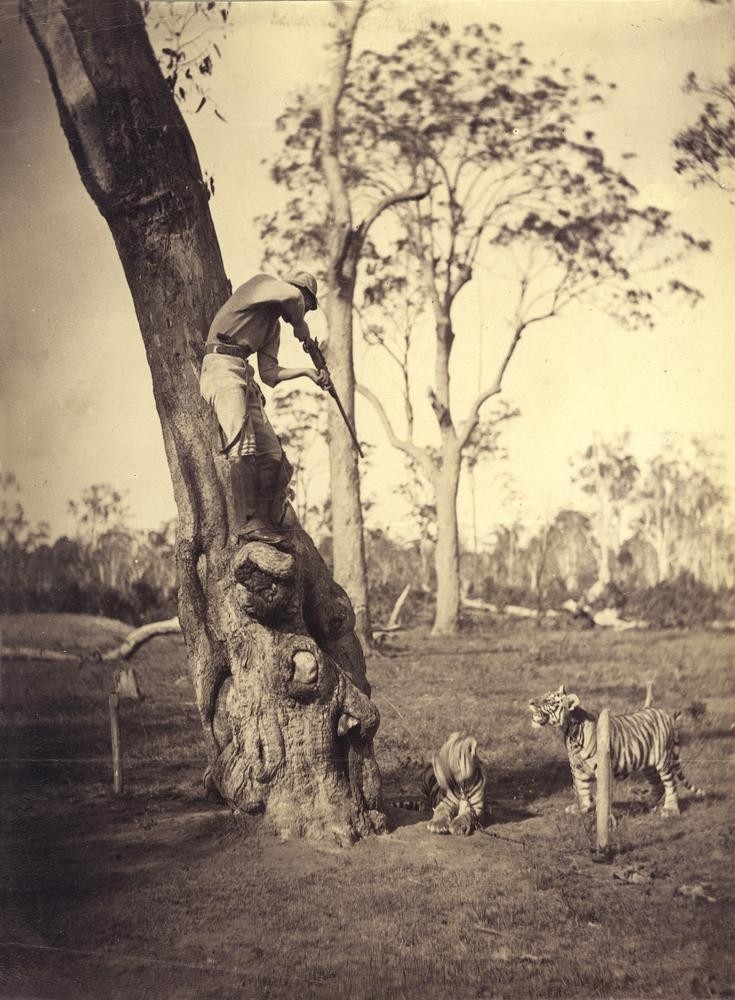
A staged photograph of James Trackson shooting tigers. The gun was not fired and no animal was hurt. John Oxley Library, State Library of Queensland Image number: APE-021-01-0001
Higgins would eventually set up a mini zoo and attraction in Brisbane city, on the corner of George and Turbot Streets. This establishment would exhibit his array of wildlife, and even supported the occasional visiting brass band. According to reports at the time, Higgins would attract visitors to his tiger show by offering them gifts, including, bags, dishes, and even womens' underclothing:
The Tiger Show, Sat 10 Nov 1888, page 6, Queensland Figaro and Punch (Brisbane, Qld: 1885 - 1889) - Retrieved by Trove.nla.gov.au
However, Higgins' name would forever lie in infamy after the great tiger escape of 1888. A fully grown Bengal tiger, named Jimmy, escaped his cage, causing chaos and terror in the Brisbane CBD, injuring several people including Charles Higgins himself, who was bitten on the arm.
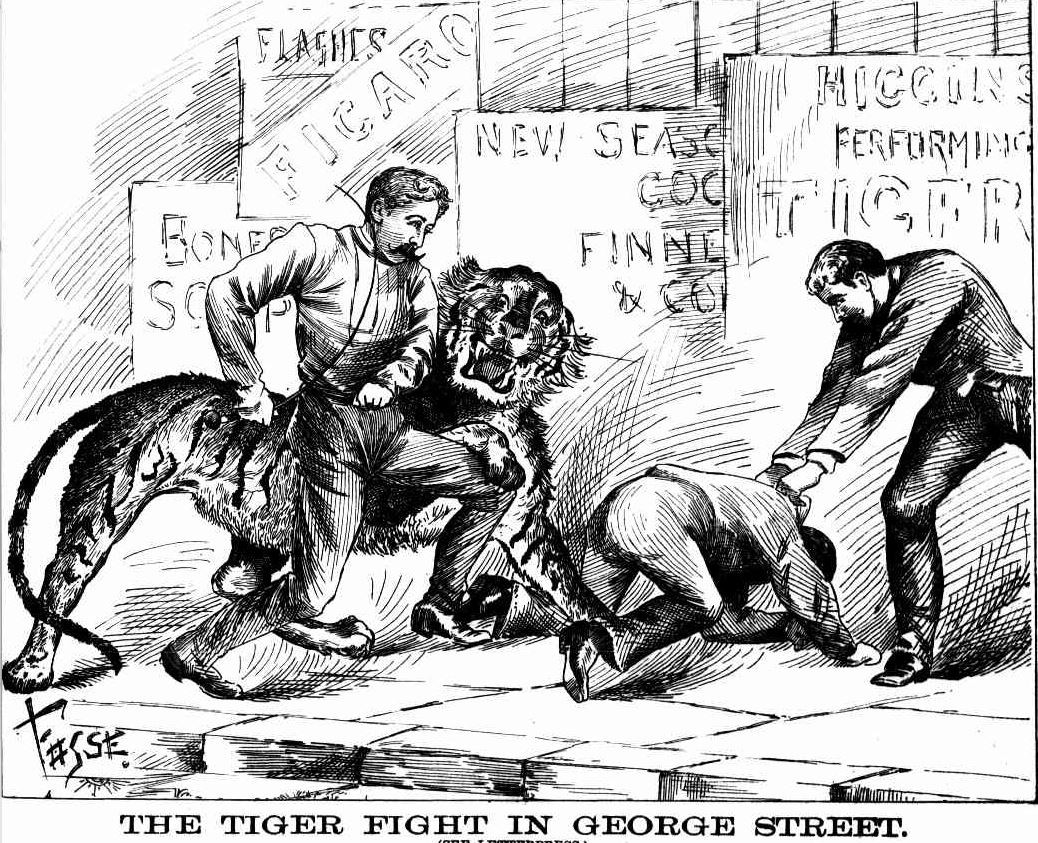
Illustration published in the Queensland Figaro and Punch detailing the escape, December 1, 1888
This event even influenced the writer of the first novel set in Queensland, The Curse and its Cure, Thomas Pennington Lucas. This early sci-fi book was written in the late 1800s, but set in a post apocalyptic Brisbane in the year 2000:
The Curse and its Cure, Thomas Pennington Lucas, John Oxley Library, State Library of Queensland
8016 Hal Eyre Cartoons 1927-1940
Henry 'Hal' Leo Eyre came to fame in Queensland as a cartoonist, illustrator and journalist. He worked at the Queenslander and the Daily Mail, contributing hundreds of his monochrome illustrations to the daily news cycles. In this piece, he depicts William McCormack, the then Labor party Premier of Queensland, whitewashing and placating the beast of socialism:
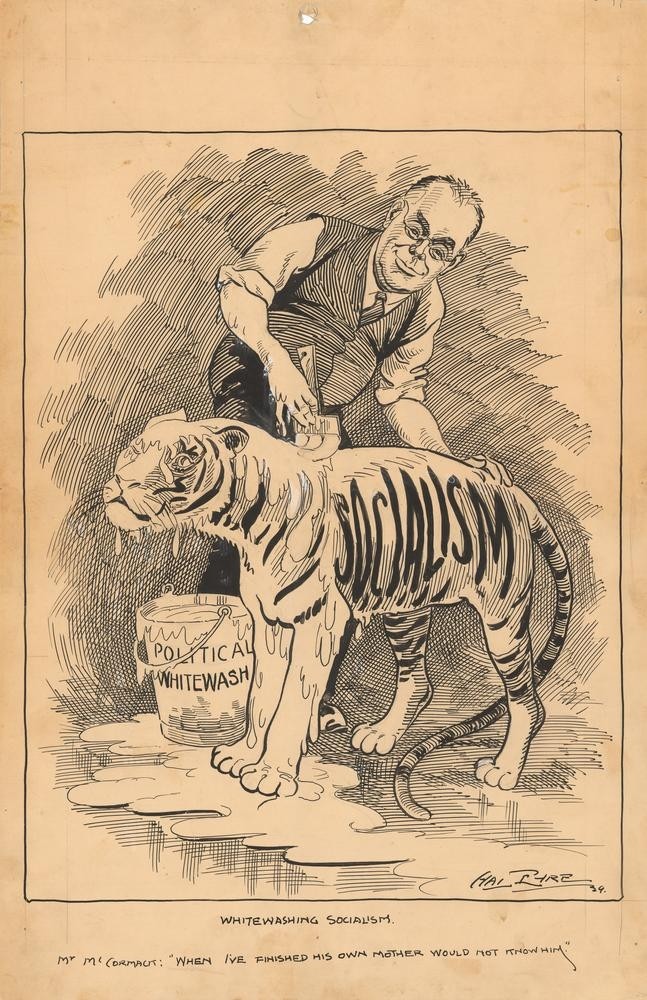
William McCormack Whitewashing the beast of socialism, 8016, Hal Eyre Cartoons, John Oxley Library, State Library of Queensland. Image no. 8016-0001-0026
Tigers are on the verge of extinction. Everyone knows that. So why does Jack Wilde think he's seen a tiger's paw in a medicine shop in Chinatown? To find out the truth Jack and his friends must become junior spies.
Julie Fison is a Brisbane writer known for her Hazard River adventure series for young readers. The books in the series sport exciting titles such as Bat Attack!, Snake Surprise!, and the thrilling Toads' Revenge! J.E. Fison works include a strong theme of caring for the environment around us.
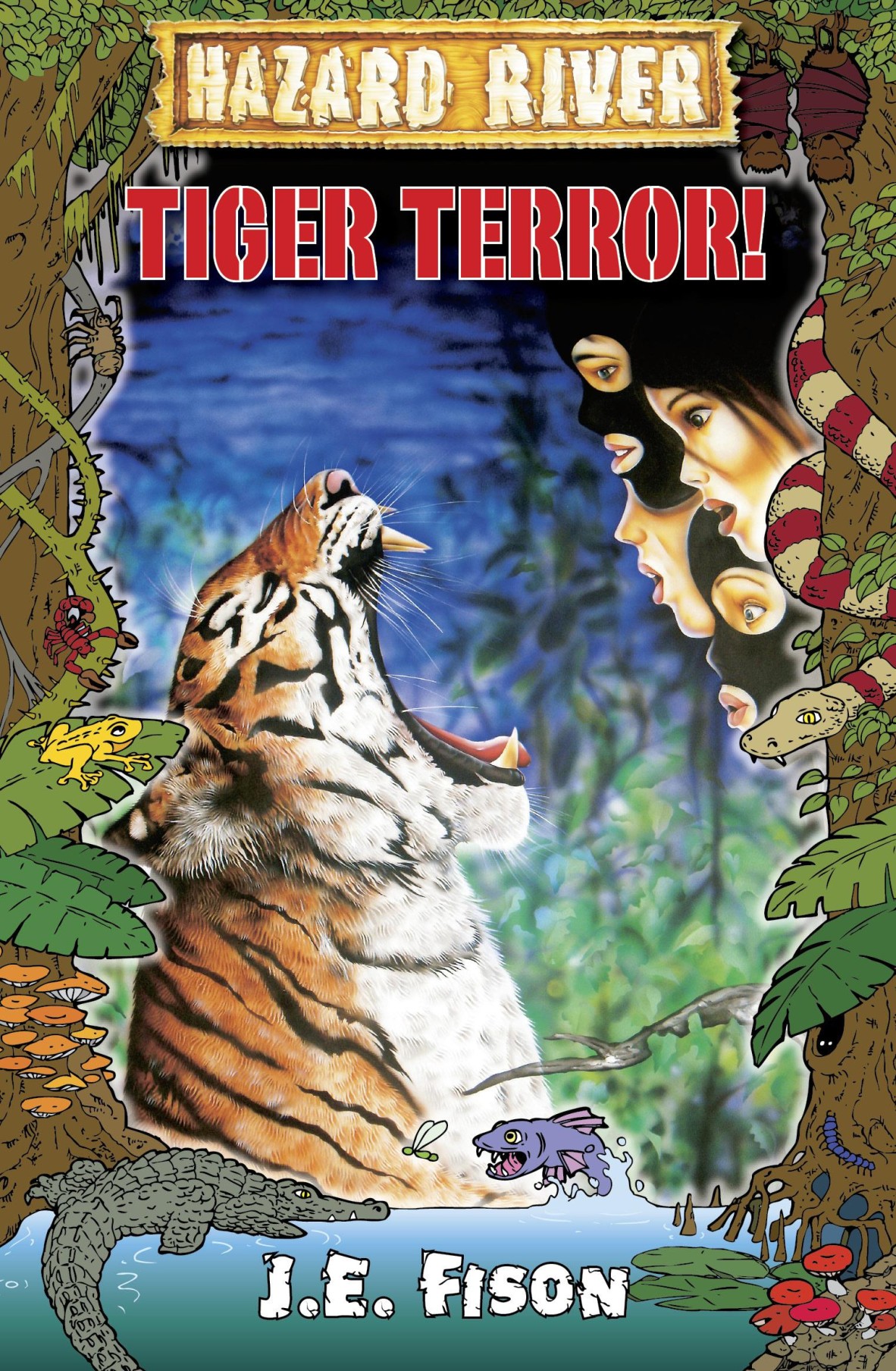
Tiger Terror by J.E. Fison
While controversial today, exotic animals performing in circus acts historically were quite common. These acts added danger and intrigue to the performance, and an audience would travel from far away to witness a dangerous animal made tame by the whip of the keeper.
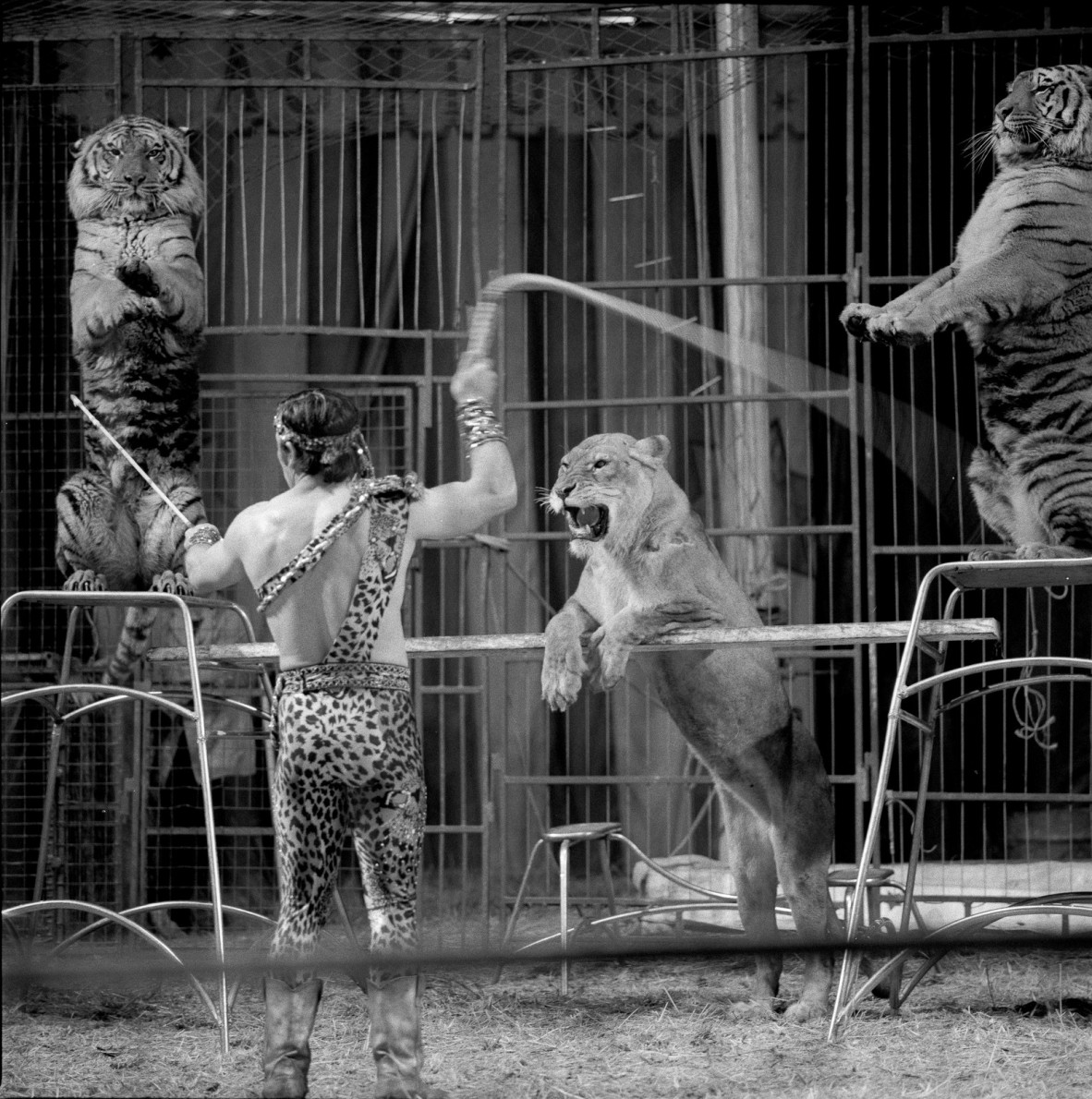
Performance with two tigers and a lion, Ashton's Circus, Brisbane, 1988
Ashton's Circus was the first circus operated in Australia. Founded in Hobart, 1847, by Thomas Mollor and then bought by James Henry Ashton. At its peak, the circus employed over 180 workers and had over 80 animals, several of these being the Bengal tiger.
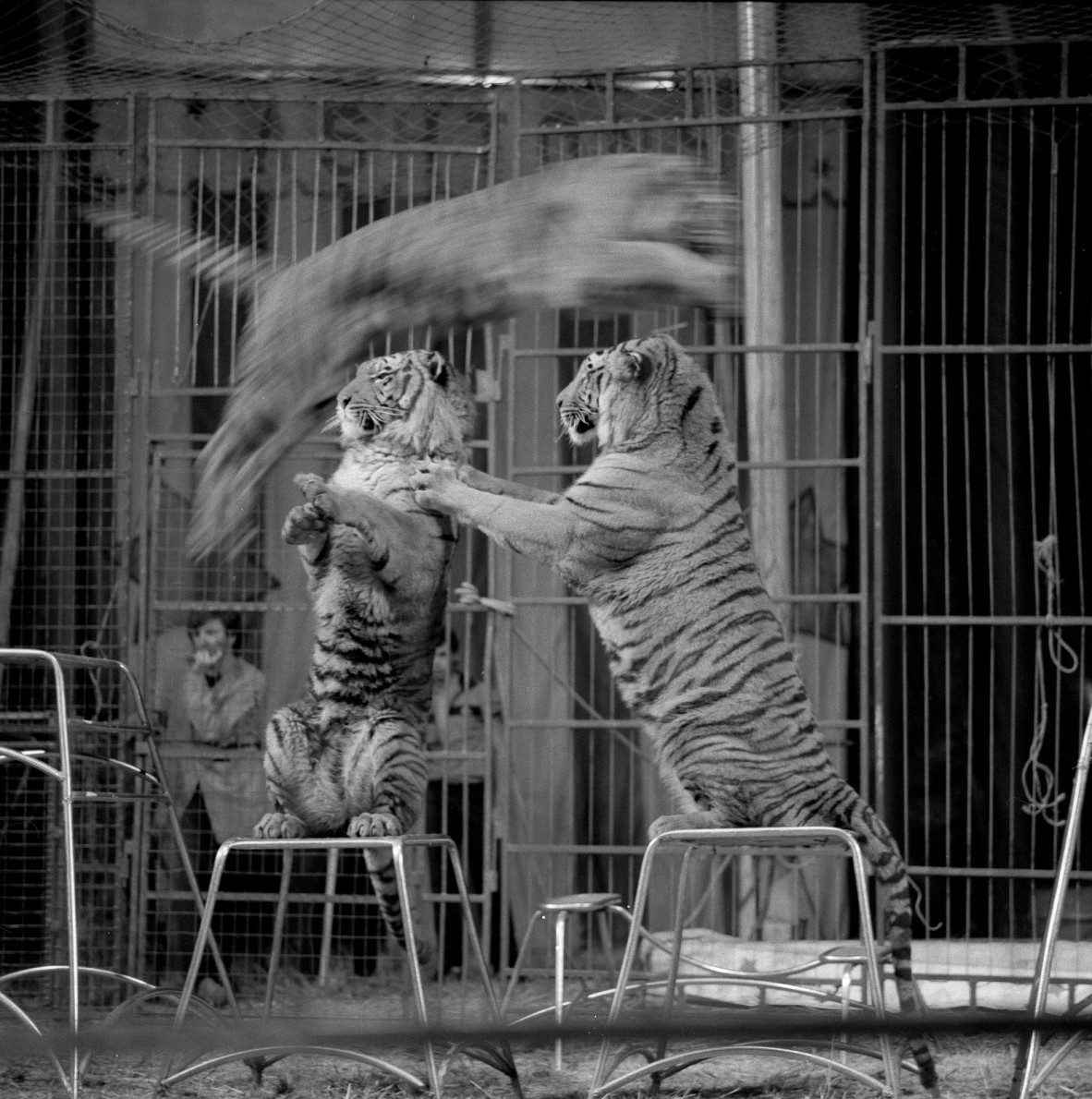
Tiger leaping over two tigers, Ashton's Circus, Brisbane, 1988
Ashton's Circus are still performing to this day, mainly in and around Perth. These days you won't find any exotic animals in the ring, the circus instead using domesticated animals such as horses and dogs.
While many things have changed over the years, our fascination and appreciation for these wild and majestic creatures will always stay the same. In this year, practice strength, bravery, and anticipate welcome changes in your life.
But please, don't let your Bengal tiger loose on the streets of Brisbane town...
To find more of State Library's collections, visit our online OneSearch catalogue.
Comments
Your email address will not be published.
We welcome relevant, respectful comments.